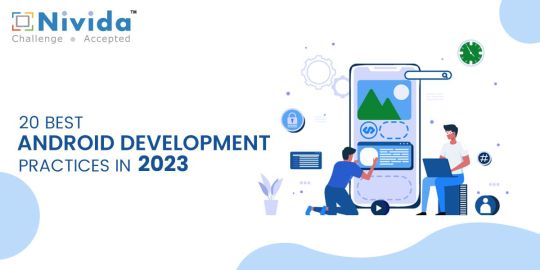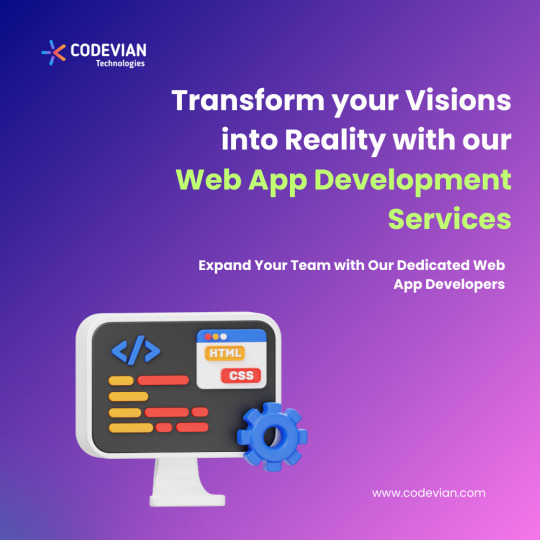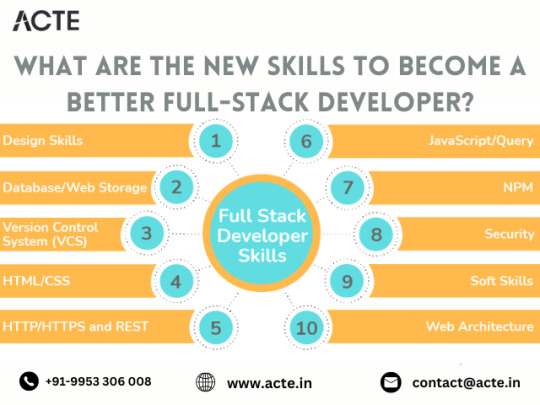#Web Push Notifications Service
Explore tagged Tumblr posts
Text

#would you like to use some of your limited phone storage and battery to host our services and site assets so we don't have to?#would you like to save our web devs the trouble of figuring out how to make this ad-festered website look nice on a teeny tiny screen?#would you like to grant us whatever access to your personal data we can convince you we need#as well as unprompted access to your eyeballs for push notifications?
3 notes
·
View notes
Text
Can You Receive Push Notifications at Offline Events? 🤔
When you think of offline events, you usually imagine banners, flyers, and on-site announcements. But did you know you can use push notifications on smartphones to deliver real-time updates even at an offline venue? This approach is not only convenient but also highly effective for marketing and communication. Let’s find out how! 1. Is It Really Possible to Get Push Notifications Offline?…
#event promotion#free push notifications#location-based push#mobile push#NFC signs#no-app push#offline event push notifications#offline marketing#push marketing#push notification service#QR code marketing#real-time alerts#subscriber acquisition#TapToFan#Web Push
0 notes
Text

Happy New Year! We’re kicking off 2024 with a Community Update after a very eventful end of 2023. We’ll give you a look at what Staff have been doing behind the scenes, an update from our Developer Team, and a preview of what’s in store for the platform. Community Stats:
As of January 19, 2024 Pillowfort currently has over 170,467 registered users and over 9,928 Communities. The rest of this post is under the cut.
In 2023 we have…
Avoided shutdown thanks to your generous support.
Launched Pillowfort Premium
Tested and launched Drafts
Added new premium frames.
Updated our Terms of Service.
Updated our Business Plan.
Continued work on the PWA & Queue.
Blocked ChatGPT Bots our platform.
Announced our upcoming policy on Generative AI.
Increased weekly invitations keys to from 10 to 50.
Continued patching bugs.
Welcome New Users!
Welcome to Pillowfort. We are so glad you are part of our community. If you haven’t yet, check out the Pillowfort101 Getting Started Guide.
Thank you for keeping Pillowfort Alive!
Your support during the End of Year Fundraiser helped us avoid ending contracts with our Staff and averted the end of our platform for another six months (July 2024). We can not express our gratitude enough to you. This has been an extremely challenging and stressful time for each member of the team. We are going to work hard to keep Pillowfort online. You have motivated us to continue the fight to be a viable platform. You may have noticed that our donation bar has reset to $5,000 at the beginning of January. This number is our monthly operating costs going forward. Each month in 2024 that we meet our funding goal it will extend Pillowfort’s life past July 2024.
Generative AI Ban Policy Update
We will be implementing our updated policy regarding Generative AI in the next site update. Prior to when the policy will be implemented we will share with the community what our definition of Generative AI is and our moderation process.
We're aware that there are concerns about how moderation systems surrounding generative AI have been abused and used for harassment on other sites: we have consulted with experts on how to avoid those issues, and the suite of moderation methods from international universities also assist with identifying harassment. Abuse of reporting systems will be taken seriously by Staff.
End of Year Fundraiser Limited Edition Badge Gift Form
The form for gifting the Limited Edition Badge to other users who couldn’t donate is now live! Click Here to Fill Out the Form. (Note: We’ll be also making a separate Staff Alert with the link as well.)
Updated Business Plan
The Pillowfort Premium subscription model remains our primary answer to generate the necessary funds needed to cover the costs of running our platform. We will continue to offer optional premium features which can be purchased by users a la carte. However, we will be working on completing the following major projects / updates as an expansion of our revenue strategy in the first half of 2024:
Release of the Progressive Web App w/ Push Notifications - The data is very clear that the lack of a mobile app is hindering our overall growth. A PWA will allow our mobile users to experience all the functionality of a native mobile app and will be much easier for our Developer Team to build & maintain than a native app. We also won't have to worry about App Store content restrictions.
Post Promotions & User-Submitted Advertisement Opt-Ins - Users will be able to promote their posts (as advertisements) by paying a fee. No subscription is required to promote a post. By default, this promoted content will only be displayed on a page specifically for viewing promoted content. While this will mean potentially less revenue, it is important to our philosophy to respect our user’s experience and not force advertising on everyone. However, users can opt into viewing promoted content in their home feed, and will receive a discount on premium features for doing so.
Subscription Gifting - Users will be able to purchase subscriptions that can be gifted to other users. Subscriptions can be gifted to a specific other user, or can be added to a communal pool for any unsubscribed users to take from. We will provide special badges for users who gift subscriptions.
Pillowfort Premium Price Increase - We will be adjusting prices to help us fund our overall operating costs. We will notify the community before any price increase is final.
Mobile Pillowfort Premium Frames - Add an option for mobile users to view Pillowfort Premium Avatar Frames in their feeds.
Other Goals for Completion in 2024 (Goals are subject to change)
Release Queue & Scheduling
Rebuild the post image uploader widget.
Rebuild the way notifications are logged & retrieved in the back-end to be more efficient & reduce errors.
Release an Onboarding Guide for new users.
Release Multi-account management/linking.
Add 2-Factor Authentication.
Enable Community Membership Applications.
Release Community Topics/Organization Options.
Help Us Keep the Lights On!
At Pillowfort we do not receive any funding from venture capital or other outside investors because we are committed to keeping our user experience a priority, and not being beholden to outside interests. While this approach allows us to stay true to our ideals and content guidelines, it also presents many challenges to our team in the form of limited resources, personnel, etc.
Our continued survival depends on the generosity of our community. If you are able to, please consider supporting us with a one-time or recurring monthly donation to help keep Pillowfort online. Any money donated to us now will be applied as a credit to your account when we release paid features & benefits in the future.
Bug Bounty Reminder
We are still offering a Bug Bounty. If you find a bug on the site, particularly one that could pose a threat to the security or functionality of the site, contact Staff through our Contact form or directly at [email protected]. If you are unsure if we received your report, you can send us a DM to the Staff account here, or DM one of our social media channels to check on the status.
We sometimes do not receive all notifications from users on other social media. DMing the Staff account on Pillowfort to check on the status is the preferred method.
The first individual to notify us of a certain issue will be eligible for monetary compensation, depending on the severity of the issue found and the information provided.
Abandoned / Modless Communities Transfer
We are taking Ownership Transfer requests for Abandoned and/or Modless Communities. The form is available here.
Pillowfort Dev Blog
Follow our very own Developer Blog for the latest updates from Lead Architect & Founder Julia Baritz.
Follow Us on Social Media
Interact with Pillowfort Staff, ask questions, plus learn about upcoming features and more on social media.
Pillowfort: Staff Pillowfort Dev: PF_dev_blog Bluesky: pillowfortsoc.bsky.social Tiktok: pillowfort.social Instagram: pillowfort.social Facebook: Pillowfortsocial X/Twitter: @pillowfort_soc Tumblr: pillowfort-social Reddit: pillowfort_social Threads: @pillowfort.social
Best,
Pillowfort Staff
#long post#pillowfort#pifo#pillowfort.social#community update#january 2024#pillowfort.soc#pfstaffalert
137 notes
·
View notes
Text
Notes de mise à jour
🌟 Nouveautés
Nous venons de mettre en ligne Blaze Pro (page en anglais), une plateforme publicitaire autonome et en libre-service pour Tumblr.
Le tableau de bord Blaze centralisé qui existait d'ores et déjà sur le Web débarque à présent dans l'application. Pour en profiter, assurez-vous tout d'abord d'avoir mis à jour votre appli. Ensuite, appuyez sur l'icône Bonhomme dans le coin inférieur droit pour consulter votre blog, puis sur l'icône Blaze (la flamme) située dans la partie haute.
Afin d'éviter toute confusion possible avec la fonction Communautés (la page en français arrive !), les Labels communautaires ont été renommés en Classificateurs de contenu. De plus, les Règles communautaires s'intitulent maintenant Règles d'utilisation (et seront bientôt consultables en français).
La catégorie "Communautés" proposées dans notre formulaire de contact a été réassignée à la fonction Communautés. N'hésitez pas à la sélectionner pour toute question, tout commentaire, doute ou signalement de bug à ce sujet.
Les invitations à rejoindre des communautés sont désormais aussi envoyées via les notifications Push de l'application. Ainsi, lorsqu'un utilisateur disposant de l'appli à jour et ayant activé les notifications est invité dans une communauté, il reçoit l'invitation par notification plutôt que par un message direct de Tumblrbot.
L'option "Sa piste audio est lue automatiquement." a été ajoutée aux raisons possibles de signalement d'une publicité.
🛠️ Correctifs
Le correctif permettant d'empêcher la lecture automatique des pistes audio des publicités dans l'appli Android est disponible. N'hésitez pas à la mettre à jour dès que possible !
Lors de la consultation d'un blog sur le réseau de blogs (ex. : equipe.tumblr.com), il est de nouveau possible de naviguer entre les images d'un diaporama visionné en mode lightbox (image en plein écran).
Durant un court laps de temps ce lundi 24 juin, les billets programmés ou placés en file d'attente n'étaient pas publiés. Ce bug a été rapidement corrigé et toutes les publications en retard ont bien été mises en ligne. Si malheureusement ce n'est toujours pas le cas, nous vous invitons à vérifier vos brouillons.
🚧 En cours
Pas d'incident à signaler.
🌱 Prochainement
Pas de nouvelle fonctionnalité à annoncer pour l'instant.
Vous rencontrez un problème ? Consultez les problèmes connus ou écrivez-nous (en anglais) et nous reviendrons vers vous aussi vite que possible.
Vous souhaitez nous faire part de vos commentaires ? Rendez-nous visite sur le blog Work in Progress et participez aux discussions de la Communauté (en anglais).
Vous désirez soutenir financièrement Tumblr ? Consultez ce billet pour tout savoir et jetez un œil à notre badge Mécène Tumblr directement sur TumblrMart.
9 notes
·
View notes
Text
Boost Sales: Responsive Web Design & Ecommerce App Development

In the fast-paced world of online retail, staying ahead of the competition requires more than just offering great products and services. Your digital presence plays a crucial role in attracting and retaining customers. Two key elements that can significantly boost your sales are responsive web design and ecommerce app development. By focusing on these aspects, you can enhance the user experience, improve accessibility, and ultimately drive more conversions. In this article, we'll explore how responsive web design and ecommerce app development can transform your online business and lead to increased sales.
1. The Importance of Responsive Web Design
Responsive web design is a design approach that ensures your website looks and functions well across all devices, including desktops, laptops, tablets, and smartphones. With the increasing use of mobile devices for online shopping, having a responsive website is no longer optional—it's essential.
Why Responsive Web Design Matters:
Enhanced User Experience: A responsive website automatically adjusts to fit the screen size of the device being used. This means that whether your customers are browsing on a smartphone or a large desktop monitor, they will have a seamless and enjoyable experience. A positive user experience is crucial for keeping visitors on your site and encouraging them to explore your products or services further.
Improved SEO Performance: Search engines like Google prioritize websites that offer a good user experience across all devices. Responsive web design is a key factor in achieving higher search engine rankings. By ensuring your website is mobile-friendly, you can improve your visibility in search results, attract more organic traffic, and increase your chances of converting visitors into customers.
Increased Conversion Rates: A website that is difficult to navigate on mobile devices can frustrate users and lead to higher bounce rates. On the other hand, a responsive design makes it easy for users to find what they're looking for, whether it's product information, contact details, or checkout options. This ease of use can significantly increase your conversion rates and boost sales.
2. The Role of Ecommerce App Development in Boosting Sales
While a responsive website is essential, having a dedicated ecommerce app can take your online business to the next level. Ecommerce app development focuses on creating a mobile application specifically designed for online shopping, offering a more personalized and streamlined experience for your customers.
Benefits of Ecommerce App Development:
Personalized Shopping Experience: Ecommerce apps allow you to offer a more personalized shopping experience by leveraging user data. Features such as personalized product recommendations, tailored promotions, and saved shopping carts can make your customers feel valued and encourage repeat purchases.
Faster and More Convenient Shopping: Apps are generally faster and more responsive than mobile websites, providing a smoother shopping experience. With features like one-click purchasing, push notifications, and offline access, ecommerce apps make it easier and more convenient for customers to shop, leading to increased sales.
Loyalty Programs and Rewards: Ecommerce apps can be integrated with loyalty programs, offering customers rewards for making purchases, referring friends, or engaging with your brand. These incentives can encourage users to return to your app, fostering customer loyalty and boosting long-term sales.
Direct Communication with Customers: Push notifications allow you to communicate directly with your customers, informing them about new products, special offers, and upcoming sales. This direct line of communication can drive immediate engagement and encourage impulse buying, resulting in higher sales.
3. Combining Responsive Web Design and Ecommerce App Development
To maximize the impact of your online presence, it's important to combine the strengths of both responsive web design and ecommerce app development. Here's how you can integrate these strategies to boost your sales:
Consistent Branding Across Platforms: Ensure that your brand’s look and feel is consistent across your responsive website and ecommerce app. This consistency helps build brand recognition and trust, making it easier for customers to navigate between your website and app.
Seamless Integration of Features: Features that work well on your responsive website should also be available on your app, and vice versa. For example, if your website offers a wish list or shopping cart, these should be seamlessly integrated into your app so that customers can access them from any device.
Data-Driven Insights: Use data from both your responsive website and ecommerce app to gain insights into customer behavior. By analyzing this data, you can optimize your marketing strategies, product offerings, and user experience to better meet the needs of your customers and drive sales.
Targeted Marketing Campaigns: Leverage the data collected from your ecommerce app to create targeted marketing campaigns. For example, you can send personalized offers to customers who have abandoned their carts, or promote new products to users based on their previous purchases. These targeted campaigns can significantly increase your sales and customer retention rates.
4. Implementing Best Practices for Success
To fully benefit from responsive web design and ecommerce app development, it's important to follow best practices during the implementation process:
Prioritize Mobile Users: Given the growing number of mobile shoppers, prioritize the mobile experience when designing your website and app. Ensure that your website loads quickly on mobile devices and that your app is easy to navigate, with intuitive controls and clear calls to action.
Focus on Speed and Performance: Both your responsive website and ecommerce app should be optimized for speed and performance. A slow-loading site or app can frustrate users and lead to lost sales. Regularly test and optimize your digital platforms to ensure they perform well under different conditions.
Invest in Quality Development: Work with experienced developers who understand the nuances of both responsive web design and ecommerce app development. Investing in quality development ensures that your digital platforms are robust, secure, and capable of handling high traffic volumes.
Keep User Experience at the Forefront: Always keep the user experience in mind when designing your website and app. Consider how users will interact with your platforms and what features will make their shopping experience easier and more enjoyable.
Conclusion
Responsive web design and ecommerce app development are powerful tools that can significantly boost your online sales. By creating a seamless and enjoyable shopping experience across all devices, you can attract more customers, increase conversions, and build long-term loyalty. Whether you're just starting out or looking to enhance your existing digital presence, investing in these strategies is essential for staying competitive in today's ecommerce landscape. Start optimizing your website and developing your ecommerce app today to unlock new opportunities for growth and success.
3 notes
·
View notes
Text
240320 FLNK_official 🐦
@FLNK_official
2024 KEN FAN CONCERT [749번째 고백 - My love, My destiny] Global Online Streaming on FLNK! 켄 생일을 온콘으로도 함께 할 수 있는데…💛 🤵뵬빛 예신들… 내 고백 들을 준비 됐어…? ▶2024. 4. 7 (SUN) 7PM KST 🔗 https://flnk.io/shows/65fa89ad36a24c79b61a273c #빅스 #VIXX #켄 #KEN #이재환 #HAPPYKENDAY #749번째고백 #MyLove #MyDestiny #ONLINE #STREAMING #FLNK
You can celebrate Ken’s birthday through OnCon too…💛 🤵starlight prospective brides… are you ready to hear my confession…?

2024 KEN FAN CONCERT [749번째 고백 - My love, My destiny] 4/7/2024, 7:00 PM, Asia/Seoul | KST (GMT+09:00)
Subtitle Languages Not available Video Quality Auto, 1080p, 720p, 360p Simultaneous Viewing Viewable on 1 device per account Playback Support
Stable wired internet with 20 Mbps or higher in speed
Platform: PC Web, Mobile Web, APP
Browser: Chrome 70+, Safari 13.1.2+ Details 2024 KEN FAN CONCERT [749번째 고백 - My love, My destiny] Announcement of the participation event 💛
🎤 “Please recommend the right words for lyrics of a wedding song created by KEN and STARLIGHT~!!”
💌 "Please write Wedding Vows of you and KEN(LEE JAE HWAN) "
Date & Time: April 7 (Sun) 19:00 KST
Artist: KEN
Running Time: 100min
Ticket Sales: Mar 20 (Wed) 18:00 KST ~ Apr 7 (Sun) 20:00 KST
Host/Organizer: KEN, CHXXTA COMPANY

FAN CONCERT Exclusive Selfie 2EA
Digital Rewards
Giveaway in April
Available in [MY > My Rewards]
Email and app push notifications upon giveaway
[Guideline for Tickets]
How to buy tickets: Click [Buy Tickets] at the bottom > Go to the ticket page > Click [Order Now]
Ticket Confirmation: MY > My Vouchers/Tickets
For international fans, please select your currency as USD in [MY > Currency]. You can pay with Credit Cards(Visa, Mastercard, AMERICAN EXPRESS, JCB, etc.), PayPal, and Union Pay.
[Guideline for Live Streaming]
How to watch: FLNK > Contents > LIVE Streaming > Click on the live streaming event > [Enter] at the bottom
*You can enter 30 minutes before the live streaming starts.
Refund is not possible once the live streaming starts.
This ticket is for the live streaming service that allows you to watch an offline performance in real-time.
Recording, illegal streaming, unauthorized distribution, or alteration of related copyrighted materials(REPLAY, Digital Rewards etc.) is strictly prohibited. If illegal streaming, recorded content, or related images are found, the person responsible may be held criminally and civilly liable for copyright infringement, and there may be restrictions on using the FLNK service.
FLNK is not responsible for any problems caused by not reading the notice above carefully.
Viewing Information
Only one device is permitted per account.
Click the play button to begin watching.
Smooth viewing requires 20Mbps+ network speed. Public networks may interfere with the connection.
Lower video quality or use Auto if internet speed is reduced.
Video quality options: Auto, 1080p, 720p, 360p (iOS fixed to Auto). Quality may adjust based on the network.
External factors may affect audio and video transmission.
Program schedule and details subject to change due to the on-site situation.
6 notes
·
View notes
Text
Website Uptime Monitoring and Management
In today’s digital age, having a website that is always available and accessible is crucial for businesses and organizations. A website downtime can lead to missed opportunities, loss of revenue, and damage to a company’s reputation. This is where website uptime monitoring and management come into play.

What is Website Uptime Monitoring?
Website uptime monitoring refers to the process of regularly checking the availability and performance of a website. It involves using specialized tools and services to monitor the website’s uptime and promptly alert the website owner or administrator if any downtime or performance issues are detected.
Website uptime monitoring services typically work by periodically sending requests to the website from multiple locations around the world. These requests simulate real user visits and check if the website responds correctly. If a problem is detected, such as the website being down or loading slowly, the monitoring service sends an alert through various communication channels like email, SMS, or push notifications.
Benefits of Website Uptime Monitoring
Implementing a robust website uptime monitoring system offers several benefits:
1. Minimizing Downtime:
Website downtime can occur due to various reasons, such as server issues, network problems, or software glitches. With uptime monitoring, you can quickly identify and address these issues before they escalate, minimizing the impact of downtime on your business.
2. Protecting Revenue and Reputation:
A website that is frequently down or slow to load can lead to frustrated visitors and potential customers abandoning your site. This directly affects your revenue and can harm your reputation. By proactively monitoring your website’s uptime, you can ensure a seamless user experience and maintain a positive brand image.
3. Tracking Performance Metrics:
Uptime monitoring services provide valuable insights into your website’s performance metrics. You can track metrics such as response time, average uptime, and downtime duration. These metrics help you identify trends, set benchmarks, and make data-driven decisions to improve your website’s performance.
4. SEO and Search Rankings:
Website downtime can negatively impact your search engine rankings. Search engines like Google prioritize websites that provide a reliable and uninterrupted user experience. Consistent uptime ensures that search engine crawlers can access and index your site properly, positively impacting your SEO efforts.
Website Uptime Management
Website uptime management goes beyond just monitoring and involves proactive steps to optimize and maintain your website’s availability. Here are some essential aspects of website uptime management:
1. Reliable Web Hosting:
Choosing a reliable web hosting provider is crucial for ensuring maximum uptime. Look for hosting providers that offer high availability, redundant infrastructure, and strong security measures. Additionally, consider the scalability of the hosting solution to accommodate your website’s growth.
2. Regular Maintenance and Updates:
Performing regular maintenance tasks, such as updating software, plugins, and security patches, is essential for keeping your website secure and stable. Outdated software can introduce vulnerabilities that could lead to downtime or compromise the integrity of your website.
3. Load Testing and Performance Optimization:
Conduct regular load testing to ensure your website can handle increased traffic without slowing down or crashing. Performance optimization techniques, such as caching, content delivery networks (CDNs), and code optimizations, can significantly improve your website’s speed and reliability.
4. Disaster Recovery and Backup Plans:
Prepare for the worst-case scenarios
by implementing robust disaster recovery and backup plans. Regularly back up your website’s data, databases, and configurations, and store them in secure off-site locations. This ensures that you can quickly restore your website in case of any unforeseen incidents.
Conclusion
Website uptime monitoring and management are vital for ensuring a reliable and high-performing online presence. By proactively monitoring your website’s uptime, you can address issues promptly, protect your revenue and reputation, and improve your overall user experience. Combine this with effective website uptime management practices to maximize the availability and stability of your website. Remember, a website that is always up and running is a key ingredient for success in today’s digital landscape.

Source
#WebManagement#ServerHosting#WebsiteMaintenance#TechSupport#CloudHosting#DataCenter#ServerManagement#WebHosting#ITInfrastructure#WebsiteSecurity#ServerAdmin#HostingSolutions#WebsitePerformance#ServerMonitoring#WebDevelopment#CloudComputing#NetworkSecurity#DomainRegistration#BackupandRecovery#Cybersecurity
22 notes
·
View notes
Text
DIGITAL MARKETING-WEB PULSE
Digital marketing is a broad field encompassing various strategies and tools used to promote products, services, or brands online. It leverages digital channels and technologies to reach and engage with target audiences. Here’s a breakdown of some key components:
Search Engine Optimization (SEO): Enhancing website content and structure to rank higher in search engine results pages (SERPs), thereby increasing organic (non-paid) traffic.
Content Marketing: Creating and distributing valuable content (such as blog posts, videos, infographics) to attract and engage a target audience, ultimately driving profitable customer action.
Social Media Marketing: Utilizing platforms like Facebook, Instagram, Twitter, LinkedIn, and others to connect with audiences, build brand awareness, and drive traffic.
Email Marketing: Sending targeted emails to nurture leads, engage existing customers, and drive conversions. This can include newsletters, promotional offers, and personalized content.
Pay-Per-Click (PPC) Advertising: Running paid ads on platforms like Google Ads or social media channels, where advertisers pay each time their ad is clicked. This can drive targeted traffic and generate leads quickly.
Affiliate Marketing: Partnering with other businesses or individuals (affiliates) who promote your products or services in exchange for a commission on sales or leads they generate.
Influencer Marketing: Collaborating with influential individuals or creators in your industry to promote your brand or products to their followers.
Analytics and Data Analysis: Using tools like Google Analytics to track and analyze digital marketing efforts, measure performance, and make data-driven decisions.
Online Public Relations (PR): Managing your brand’s online reputation and building relationships with digital media and influencers to gain positive coverage and enhance credibility.
Mobile Marketing: Reaching audiences through mobile devices via mobile apps, SMS, push notifications, and mobile-optimized websites.
Each component works together to create a cohesive strategy that helps businesses achieve their marketing goals, whether that’s increasing brand awareness, generating leads, or driving sales.

#digital art#digital marketing#tech#seo services#ppc services#e commerce#business#design#growth#grow your business#website
3 notes
·
View notes
Text
20 Best Android Development Practices in 2023
Introduction:
In today's competitive market, creating high-quality Android applications requires adherence to best development practices. Android app development agencies in Vadodara (Gujarat, India) like Nivida Web Solutions Pvt. Ltd., play a crucial role in delivering exceptional applications. This article presents the 20 best Android development practices to follow in 2023, ensuring the success of your app development projects.

1. Define Clear Objectives:
Begin by defining clear objectives for your Android app development project. Identify the target audience, the app's purpose, and the specific goals you aim to achieve. This clarity will guide the development process and result in a more focused and effective application.
2. Embrace the Material Design Guidelines:
Google's Material Design guidelines provide a comprehensive set of principles and guidelines for designing visually appealing and intuitive Android applications. Adhering to these guidelines ensures consistency, enhances usability, and delivers an optimal user experience.
3. Optimize App Performance:
Performance optimization is crucial for user satisfaction. Focus on optimizing app loading times, minimizing network requests, and implementing efficient caching mechanisms. Profiling tools like Android Profiler can help identify performance bottlenecks and improve overall app responsiveness.
4. Follow a Modular Approach:
Adopting a modular approach allows for easier maintenance, scalability, and code reusability. Breaking down your app into smaller, manageable modules promotes faster development, reduces dependencies, and enhances collaboration among developers.
5. Implement Responsive UI Designs:
Designing a responsive user interface (UI) ensures that your app adapts seamlessly to various screen sizes and orientations. Utilize Android’s resources, such as ConstraintLayout, to create dynamic and adaptive UIs that provide a consistent experience across different devices.
6. Prioritize Security:
Android app security is of paramount importance. Employ secure coding practices, authenticate user inputs, encrypt sensitive data, and regularly update libraries and dependencies to protect your app against vulnerabilities and potential attacks.
7. Opt for Kotlin as the Preferred Language:
Kotlin has gained immense popularity among Android developers due to its conciseness, null safety, and enhanced interoperability with existing Java code. Embrace Kotlin as the primary programming language for your Android app development projects to leverage its modern features and developer-friendly syntax.
8. Conduct Thorough Testing:
Testing is crucial to ensure the reliability and stability of your Android applications. Employ a combination of unit testing, integration testing, and automated UI testing using frameworks like Espresso to catch bugs early and deliver a robust app to your users.
9. Optimize Battery Consumption:
Battery life is a significant concern for Android users. Optimize your app's battery consumption by minimizing background processes, reducing network requests, and implementing efficient power management techniques. Android's Battery Optimization APIs can help streamline power usage.
10. Implement Continuous Integration and Delivery (CI/CD):
Adopting CI/CD practices facilitates frequent code integration, automated testing, and seamless deployment. Tools like Jenkins and Bitrise enable developers to automate build processes, run tests, and deploy app updates efficiently, resulting in faster time-to-market and improved quality.
11. Leverage Cloud Technologies:
Integrating cloud technologies, such as cloud storage and backend services, can enhance your app's scalability, performance, and reliability. Services like Firebase offer powerful tools for authentication, database management, push notifications, and analytics.
12. Ensure Accessibility:
Make your Android app accessible to users with disabilities by adhering to accessibility guidelines. Provide alternative text for images, support screen readers, and use colour contrast appropriately to ensure inclusivity and a positive user experience for all users.
13. Optimize App Size:
Large app sizes can deter users from downloading and installing your application. Optimize your app's size by eliminating unused resources, compressing images, and utilizing Android App Bundles to deliver optimized APKs based on device configurations.
14. Implement Offline Support:
Provide offline capabilities in your app to ensure users can access essential features and content even when offline. Implement local caching, synchronize data in the background, and notify users of limited or no connectivity to deliver a seamless user experience.
15. Implement Analytics and Crash Reporting:
Integrate analytics and crash reporting tools, such as Google Analytics and Firebase Crashlytics, to gain insights into user behaviour, identify areas for improvement, and address crashes promptly. This data-driven approach helps in refining your app's performance and user engagement.
16. Keep Up with Android OS Updates:
Stay up to date with the latest Android OS updates, new APIs, and platform features. Regularly update your app to leverage new functionalities, enhance performance, and ensure compatibility with newer devices.
17. Provide Localized Versions:
Cater to a global audience by providing localized versions of your app. Translate your app's content, user interface, and notifications into different languages to expand your user base and increase user engagement.
18. Ensure App Store Optimization (ASO):
Optimize your app's visibility and discoverability in the Google Play Store by utilizing appropriate keywords, engaging app descriptions, compelling screenshots, and positive user reviews. ASO techniques can significantly impact your app's download and conversion rates.
19. Follow Privacy Regulations and Guidelines:
Adhere to privacy regulations, such as GDPR and CCPA, and ensure transparent data handling practices within your app. Obtain user consent for data collection, storage, and usage, and provide clear privacy policies to establish trust with your users.
20. Regularly Update and Maintain Your App:
Continuously monitor user feedback, track app performance metrics, and release regular updates to address bugs, introduce new features, and enhance user experience. Regular maintenance ensures that your app remains relevant, competitive, and secure.
Conclusion:
Adopting these 20 best Android development practices in 2023 will help Android app development companies in India, create exceptional applications. By focusing on objectives, embracing Material Design, optimizing performance, and following modern development approaches, your Android apps will stand out in the market, delight users, and achieve long-term success. Also by partnering with an Android App Development Company in India (Gujarat, Vadodara) you can leverage their expertise.
#Android App development company in India#Android App development agencies in India#Android App development companies in India#Android App development company in Gujarat#Android App development company in Vadodara#Android App development agencies in Vadodara#Android App development agencies in Gujarat#Android App development companies in Vadodara#Android App development companies in Gujarat
7 notes
·
View notes
Text
Exploring the Difference Between Web Development and App Development

Hey there, tech enthusiasts! So, you've heard about web development and app development, but you're not quite sure what sets them apart? Don't worry, I'll break it down for you in simple terms!
First things first, what exactly is web development? Well, think of it like building a house on the internet! Web development involves creating websites or web applications that can be accessed through a web browser, like Google Chrome or Safari. It's all about designing, building, and maintaining websites that people can visit and interact with online.
Now, let's talk about app development. This is like building a cozy little home on your smartphone or tablet! App development involves creating mobile applications that are installed directly onto your device, like games, social media apps, or productivity tools. It's all about designing, building, and maintaining applications that people can download and use on their mobile devices.
So, what's the difference between web development and app development? Here are a few key distinctions:
Platform: The biggest difference between web development and app development is the platform they're built for. Web app development services focuses on creating websites or web applications that are accessed through a web browser on desktop computers or mobile devices. App development, on the other hand, focuses on creating mobile applications that are installed directly onto a device and accessed through an icon on the home screen.
Technology: Web development typically involves technologies like HTML, CSS, and JavaScript for creating the front end (what users see and interact with) and languages like PHP, Python, or Node.js for creating the back end (the server-side logic). App development, on the other hand, often involves languages like Java or Kotlin for Android development, Swift or Objective-C for iOS development, or frameworks like React Native or Flutter for cross-platform development.
Distribution: Web applications are usually accessible to anyone with an internet connection and can be accessed through a web browser without the need for installation. Mobile applications, on the other hand, need to be downloaded and installed onto a device from an app store like the Apple App Store or Google Play Store.
User Experience: The user experience of web applications and mobile applications can be quite different. Web applications are designed to work across different devices and screen sizes, so they often have a responsive design that adapts to fit the user's device. Mobile applications, on the other hand, are specifically designed for use on mobile devices and can take advantage of features like touch screens, GPS, and push notifications.
In conclusion, while web development and app development share some similarities, such as creating digital experiences for users, they also have key differences in terms of platform, technology, distribution, and user experience. Whether you're interested in building websites or mobile applications, both fields offer exciting opportunities to unleash your creativity and make an impact in the digital world!
2 notes
·
View notes
Text
10 Web Developer Secrets You Need to Know for Success in 2024

In the fast-paced world of web development, staying ahead of the curve is essential for success. As we venture into 2024, it's crucial to uncover the latest secrets and strategies that can propel your web development endeavors to new heights. Let's delve into ten invaluable insights that every web developer should know for a prosperous year ahead.
Embrace Progressive Web Apps (PWAs)
In 2024, the prominence of Progressive Web Apps (PWAs) continues to soar. These innovative web applications offer users an immersive, app-like experience directly from their browsers. By embracing PWAs, developers can enhance user engagement, improve performance, and seamlessly integrate features like push notifications and offline functionality.
Prioritize Mobile-First Design
With mobile devices dominating internet usage, prioritizing mobile-first design is non-negotiable. Crafting websites with mobile users in mind ensures optimal responsiveness and usability across various devices and screen sizes. Embrace responsive design principles to deliver a seamless browsing experience that caters to the needs of your audience.
Harness the Power of AI and Machine Learning
AI and machine learning technologies are revolutionizing the field of web development. From personalized content recommendations to intelligent chatbots, incorporating AI-driven solutions can elevate user experiences and streamline processes. Explore AI-powered tools and frameworks to unlock new possibilities and stay ahead of the competition.
Optimize for Core Web Vitals
In 2021, Google introduced Core Web Vitals as essential metrics for evaluating user experience. To rank higher in search results and provide users with a smoother browsing experience, prioritize optimizing for Core Web Vitals. Focus on metrics like loading speed, interactivity, and visual stability to ensure your website meets Google's standards and delights visitors.
Implement Voice Search Optimization
The prevalence of voice-enabled devices continues to grow, shaping the way users interact with the web. To capitalize on this trend, implement voice search optimization strategies to make your website more discoverable through voice queries. Consider natural language patterns and long-tail keywords to optimize content for voice search queries effectively.
Enhance Security with HTTPS
Security remains a top priority for web developers, especially in an era marked by increasing cyber threats. Transitioning your website to HTTPS not only encrypts data transmitted between the user's browser and your server but also instills trust and credibility among visitors. Prioritize security protocols to safeguard sensitive information and protect your users' privacy.
Leverage Content Delivery Networks (CDNs)
Content Delivery Networks (CDNs) play a pivotal role in optimizing website performance and reliability. By distributing content across multiple servers worldwide, CDNs reduce latency and ensure faster loading times for users across the globe. Integrate CDNs into your web development workflow to deliver content swiftly and efficiently, regardless of geographical location.
Stay Abreast of Accessibility Standards
Accessibility is an integral aspect of web development, ensuring that websites are inclusive and accessible to all users, regardless of disabilities or impairments. Stay abreast of accessibility standards such as the Web Content Accessibility Guidelines (WCAG) and implement best practices to make your website more usable and navigable for everyone.
Embrace Serverless Architecture
Serverless architecture offers a streamlined approach to web development, eliminating the need to manage servers and infrastructure manually. By leveraging cloud-based services and functions, developers can focus on writing code and delivering value without worrying about scalability or maintenance. Embrace serverless architecture to enhance agility, reduce costs, and accelerate development cycles.
Cultivate Continuous Learning and Adaptation
In the dynamic landscape of web development, continuous learning and adaptation are paramount. Stay curious, explore emerging technologies, and embrace new methodologies to evolve with the industry's ever-changing demands. Cultivate a mindset of lifelong learning, experiment with new tools and techniques, and adapt your skills to thrive in the digital ecosystem.
As we navigate the complexities of web development in 2024, embracing these secrets and strategies can position you for success in an ever-evolving landscape. By staying ahead of trends, prioritizing user experience, and leveraging innovative technologies, you can unlock new opportunities and achieve remarkable feats in the realm of web development.
#web development company#app development#web development services#web development#mobile app development
2 notes
·
View notes
Text
Pillowfort now has over 150,000 registered users!

Hi everyone. We are very excited to announce that as of June 2023 we now have over 150,000 registered users who have made our little platform their home.

Pillowfort launched in 2017 and we weren’t sure where the journey would take us. What we did know, however, was that we want our platform to be known as a user-friendly safe space on the internet for creativity, communication, and content-sharing.
Pillowfort’s success and existence would not be possible if it wasn’t for your continued support. By funding us, telling your friends about Pillowfort, signing in to Pillowfort, or even just giving us feedback: You have made a difference. You have made a direct impact in keeping us online. Thank you so much.
As each day passes we are watching in real time more platforms become restrictive. The censorship of BIPOC, LGQBTIA2S+, NSFW artists, and sex workers in social media spaces continues. Some platforms have even disappeared without giving their users notice.
We realize now more than ever our platform needs to be the counterbalance. We are one of the few platforms available that is staunch about moderating bigotry and hate speech, and we will continue to provide an outlet for fans and creators to have freedom of expression. We’re not going anywhere– as long as we have your help.
For those new here, Pillowfort has been entirely user funded since the beginning. That means we have received no assistance from large investors or venture capital funding. While it is much more difficult to operate & grow a platform with limited funding, it keeps us accountable to the desires of our users instead of investors or shareholders. Your support has helped us continue to compensate our teams working on the platform, begin development of a progressive web app, and finally release our optional subscription service: Pillowfort Premium.
In the next few weeks we will be sharing how we are going to tackle abandoned/modless Communities, provide an update to our discussions regarding AI Generated Images on Pillowfort, and release a Site Update with several bug fixes. We are also still tackling our 2023 Development Goals.
Development Goals 2023
Goals with priority release / currently under development:
Additions to subscription service: credit-only subscriptions, applying custom credit amounts
Post Drafts
Post Queue & Scheduling
Goals for completion by the end of this summer:
Progressive Web App for mobile with push notifications (!!)
Rebuild the post image uploader widget to be more good and less bad
Rebuild the way notifications are logged & retrieved in the back-end to be more efficient & reduce errors
Onboarding Guide for new users
Goals for completion by end of 2023:
Paid post promotions
Multi-account management/linking
2-Factor Authentication
Community Membership Applications
Community Topics/Organization Options
From the bottom of our hearts thank you again! We hope our community continues to grow and we are excited to share as many updates as we are able to. Stay tuned.
295 notes
·
View notes
Text
Elevating Your Full-Stack Developer Expertise: Exploring Emerging Skills and Technologies
Introduction: In the dynamic landscape of web development, staying at the forefront requires continuous learning and adaptation. Full-stack developers play a pivotal role in crafting modern web applications, balancing frontend finesse with backend robustness. This guide delves into the evolving skills and technologies that can propel full-stack developers to new heights of expertise and innovation.

Pioneering Progress: Key Skills for Full-Stack Developers
1. Innovating with Microservices Architecture:
Microservices have redefined application development, offering scalability and flexibility in the face of complexity. Mastery of frameworks like Kubernetes and Docker empowers developers to architect, deploy, and manage microservices efficiently. By breaking down monolithic applications into modular components, developers can iterate rapidly and respond to changing requirements with agility.
2. Embracing Serverless Computing:
The advent of serverless architecture has revolutionized infrastructure management, freeing developers from the burdens of server maintenance. Platforms such as AWS Lambda and Azure Functions enable developers to focus solely on code development, driving efficiency and cost-effectiveness. Embrace serverless computing to build scalable, event-driven applications that adapt seamlessly to fluctuating workloads.
3. Crafting Progressive Web Experiences (PWEs):
Progressive Web Apps (PWAs) herald a new era of web development, delivering native app-like experiences within the browser. Harness the power of technologies like Service Workers and Web App Manifests to create PWAs that are fast, reliable, and engaging. With features like offline functionality and push notifications, PWAs blur the lines between web and mobile, captivating users and enhancing engagement.
4. Harnessing GraphQL for Flexible Data Management:
GraphQL has emerged as a versatile alternative to RESTful APIs, offering a unified interface for data fetching and manipulation. Dive into GraphQL's intuitive query language and schema-driven approach to simplify data interactions and optimize performance. With GraphQL, developers can fetch precisely the data they need, minimizing overhead and maximizing efficiency.

5. Unlocking Potential with Jamstack Development:
Jamstack architecture empowers developers to build fast, secure, and scalable web applications using modern tools and practices. Explore frameworks like Gatsby and Next.js to leverage pre-rendering, serverless functions, and CDN caching. By decoupling frontend presentation from backend logic, Jamstack enables developers to deliver blazing-fast experiences that delight users and drive engagement.
6. Integrating Headless CMS for Content Flexibility:
Headless CMS platforms offer developers unprecedented control over content management, enabling seamless integration with frontend frameworks. Explore platforms like Contentful and Strapi to decouple content creation from presentation, facilitating dynamic and personalized experiences across channels. With headless CMS, developers can iterate quickly and deliver content-driven applications with ease.
7. Optimizing Single Page Applications (SPAs) for Performance:
Single Page Applications (SPAs) provide immersive user experiences but require careful optimization to ensure performance and responsiveness. Implement techniques like lazy loading and server-side rendering to minimize load times and enhance interactivity. By optimizing resource delivery and prioritizing critical content, developers can create SPAs that deliver a seamless and engaging user experience.
8. Infusing Intelligence with Machine Learning and AI:
Machine learning and artificial intelligence open new frontiers for full-stack developers, enabling intelligent features and personalized experiences. Dive into frameworks like TensorFlow.js and PyTorch.js to build recommendation systems, predictive analytics, and natural language processing capabilities. By harnessing the power of machine learning, developers can create smarter, more adaptive applications that anticipate user needs and preferences.
9. Safeguarding Applications with Cybersecurity Best Practices:
As cyber threats continue to evolve, cybersecurity remains a critical concern for developers and organizations alike. Stay informed about common vulnerabilities and adhere to best practices for securing applications and user data. By implementing robust security measures and proactive monitoring, developers can protect against potential threats and safeguard the integrity of their applications.
10. Streamlining Development with CI/CD Pipelines:
Continuous Integration and Deployment (CI/CD) pipelines are essential for accelerating development workflows and ensuring code quality and reliability. Explore tools like Jenkins, CircleCI, and GitLab CI/CD to automate testing, integration, and deployment processes. By embracing CI/CD best practices, developers can deliver updates and features with confidence, driving innovation and agility in their development cycles.
#full stack developer#education#information#full stack web development#front end development#web development#frameworks#technology#backend#full stack developer course
2 notes
·
View notes
Text
6 Cutting-Edge Web Development Trends in London for 2023
Innovative websites balance creativity, performance and future-proofing across digital experiences. The latest web development requires ongoing learning due to fast technology changes. What are the popular frameworks, techniques, and interactions are people discussing for the upcoming year? Top UX Design Company London and coders are sharing the latest web trends that influence their strategic consulting for 2023 engagements.
1. Progressive Web Apps (PWAs)
Web Design Services London says Progressive Web Apps are a game-changer. They bring together web and mobile apps' high performance and user engagement. Like traditional web pages, PWAs load quickly, offering functionality like offline accessibility and push notifications. Businesses in London that choose PWA technology will enjoy better user experiences, higher conversion rates, and lower development costs.

2. AI and Machine Learning Integration
More and more web design services London UK include artificial intelligence and machine learning in web development. They analyze users 'behavior and preferences and provide customized experiences for users. Whether through chatbots that provide immediate customer service, or through AI-assisted personalization of content and gifts, AI and machine learning are changing how companies do business online with their customers.
3. Voice Search Optimization
With voice-activated devices becoming ubiquitous, focusing on voice search is becoming essential. Digital Marketing Services in London believes that web content must be adapted to voice queries, which are more conversational and longer than typed searches. This trend is geared towards making your website's information easy to find through voice search, improving navigability and user experience.
4. Motion UI Design
Motion UI is a rising trend among the London UI design Company experts. Animations and dynamic graphics are used to liven up web pages and make them interactive. This year, you will see more sites using inconspicuous animations, hover effects, and background animations to direct user focus and to enhance storytelling on pages.
5. Cybersecurity Enhancements
Experts in IT Consultation service London are discussing the need for strong cybersecurity in web development due to the growing threats in the digital world. It means using modern security protocols, doing regular security audits, and following data protection rules. Companies must protect their data and build trust with customers.

6. Sustainable Web Design
Sustainability in web design is an emerging trend. Therefore, Web Design London firms have focused on developing environmentally friendly and energy-efficient websites. This means optimizing images and videos for quicker load times, using eco-friendly hosting services, and designing for less data transfer. It's about designing sites not only pretty and functional, but friendly to Mother Earth.
Conclusion
London Web Development Services stays ahead of tech shifts. They do this to serve clients better. They experiment, test solutions, and adopt new technologies early. They also choose the right time to implement these changes. OTB Solutions is the Best UX Company In London and a digital transformation expert. They combine strategic vision with tactical implementations. Their goal is to convert ambitious ideas into engaging online experiences. These experiences are future-ready and prepared for what comes next.
2 notes
·
View notes
Text
Programmatic Ads in one Platform Too Good to be True ?
Nowadays of digital advertising, managing several campaigns across numerous platforms could be a intimidating task. But Prog Cloud platform supplies a comprehensive solution that enables you to create effective ad promotions and manage over 30 systems from a single web page.
Prog Cloud turns a complex task right into a breeze because of the cloud budgeting function. This technology simplifies administration of a user’s ad spending budget, enabling them to optimize and obtain the most out of these money. This is associated with renowned companies such as for example Propeller Advertisements, Zeropark, Adcash, AdMaven, PopAds, ExoClick, and PopCash among numerous others like Adnium, TrafficStars, Bidvertiser, ClickAdilla, Ezmob and AdRoll, to name a few.
Utilizing Prog Cloud enables you to incorporate multiple ad varieties in your campaign effortlessly. Be it Web Push, Out Stream, Video Slider, Tab Direct, Popunder, Banner, Interstitial, Gallery, In Page, Notification, Native Ad, In App or In Stream, the flexibleness is got by one to choose what works best for the campaign. Check out the full set of connected platforms [here](https://ad.page/progcloud).

Now, why is this important? Programmatic marketing supplies a far better and efficient advertising process. Your ads are geared to reach the proper audience at the proper time, predicated on their online behavior, location and several other factors. This means you are not wasting resources on those who are not interested in your service or product.
With Prog Cloud, you should have the power of algorithmic technologies to optimize your allowance and connect you with the very best ad networks for the campaign. This eliminates marketers that don’t work with your campaigns and delivers increased ROI for your marketing spend.
Prepared to take your promotional initiatives to fresh heights with Prog Cloud System? Find out more about it [here](https://ad.page/progcloud) and obtain began by [registering for an accounts](https://ad.page/register).
For companies thinking about scaling their paid advertising for web and social media marketing, you can examine out this [link](https://advertisement.page/paid) for additional information. This service is fantastic for growing businesses seeking to expand their online existence and drive more potential clients or product sales.
In conclusion, managing ad campaigns from several platforms is not any a puzzle longer. With Prog Cloud platform, you obtain a single-window treatment for manage all of your campaigns while maximizing your allowance in real-time effectively.
3 notes
·
View notes
Text
Advanced Techniques in Full-Stack Development

Certainly, let's delve deeper into more advanced techniques and concepts in full-stack development:
1. Server-Side Rendering (SSR) and Static Site Generation (SSG):
SSR: Rendering web pages on the server side to improve performance and SEO by delivering fully rendered pages to the client.
SSG: Generating static HTML files at build time, enhancing speed, and reducing the server load.
2. WebAssembly:
WebAssembly (Wasm): A binary instruction format for a stack-based virtual machine. It allows high-performance execution of code on web browsers, enabling languages like C, C++, and Rust to run in web applications.
3. Progressive Web Apps (PWAs) Enhancements:
Background Sync: Allowing PWAs to sync data in the background even when the app is closed.
Web Push Notifications: Implementing push notifications to engage users even when they are not actively using the application.
4. State Management:
Redux and MobX: Advanced state management libraries in React applications for managing complex application states efficiently.
Reactive Programming: Utilizing RxJS or other reactive programming libraries to handle asynchronous data streams and events in real-time applications.
5. WebSockets and WebRTC:
WebSockets: Enabling real-time, bidirectional communication between clients and servers for applications requiring constant data updates.
WebRTC: Facilitating real-time communication, such as video chat, directly between web browsers without the need for plugins or additional software.
6. Caching Strategies:
Content Delivery Networks (CDN): Leveraging CDNs to cache and distribute content globally, improving website loading speeds for users worldwide.
Service Workers: Using service workers to cache assets and data, providing offline access and improving performance for returning visitors.
7. GraphQL Subscriptions:
GraphQL Subscriptions: Enabling real-time updates in GraphQL APIs by allowing clients to subscribe to specific events and receive push notifications when data changes.
8. Authentication and Authorization:
OAuth 2.0 and OpenID Connect: Implementing secure authentication and authorization protocols for user login and access control.
JSON Web Tokens (JWT): Utilizing JWTs to securely transmit information between parties, ensuring data integrity and authenticity.
9. Content Management Systems (CMS) Integration:
Headless CMS: Integrating headless CMS like Contentful or Strapi, allowing content creators to manage content independently from the application's front end.
10. Automated Performance Optimization:
Lighthouse and Web Vitals: Utilizing tools like Lighthouse and Google's Web Vitals to measure and optimize web performance, focusing on key user-centric metrics like loading speed and interactivity.
11. Machine Learning and AI Integration:
TensorFlow.js and ONNX.js: Integrating machine learning models directly into web applications for tasks like image recognition, language processing, and recommendation systems.
12. Cross-Platform Development with Electron:
Electron: Building cross-platform desktop applications using web technologies (HTML, CSS, JavaScript), allowing developers to create desktop apps for Windows, macOS, and Linux.
13. Advanced Database Techniques:
Database Sharding: Implementing database sharding techniques to distribute large databases across multiple servers, improving scalability and performance.
Full-Text Search and Indexing: Implementing full-text search capabilities and optimized indexing for efficient searching and data retrieval.
14. Chaos Engineering:
Chaos Engineering: Introducing controlled experiments to identify weaknesses and potential failures in the system, ensuring the application's resilience and reliability.
15. Serverless Architectures with AWS Lambda or Azure Functions:
Serverless Architectures: Building applications as a collection of small, single-purpose functions that run in a serverless environment, providing automatic scaling and cost efficiency.
16. Data Pipelines and ETL (Extract, Transform, Load) Processes:
Data Pipelines: Creating automated data pipelines for processing and transforming large volumes of data, integrating various data sources and ensuring data consistency.
17. Responsive Design and Accessibility:
Responsive Design: Implementing advanced responsive design techniques for seamless user experiences across a variety of devices and screen sizes.
Accessibility: Ensuring web applications are accessible to all users, including those with disabilities, by following WCAG guidelines and ARIA practices.
full stack development training in Pune
2 notes
·
View notes